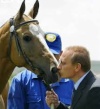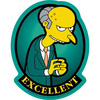The information they send to each other from IRST and IIR sensors and radar will not be too much different from the same data coming from the S-70, or going to HQ.
+68
bitcointrader70
ALAMO
Podlodka77
Atmosphere
Lennox
mnztr
Krepost
Autodestruct
franco
Rasisuki Nebia
Gomig-21
Lurk83
Russian_Patriot_
x_54_u43
Broski
Mir
lancelot
limb
Backman
tanino
owais.usmani
LMFS
lyle6
zepia
TMA1
thegopnik
Scorpius
The-thing-next-door
KoTeMoRe
Tai Hai Chen
PhSt
d_taddei2
eridan
Viktor
JohninMK
magnumcromagnon
ult
Rodion_Romanovic
AMCXXL
Regular
hoom
Cyberspec
calripson
ultimatewarrior
SeigSoloyvov
archangelski
Gazputin
George1
flamming_python
kvs
Nibiru
GunshipDemocracy
miketheterrible
zg18
Isos
medo
GarryB
Tsavo Lion
PapaDragon
Arrow
xeno
Hole
Big_Gazza
ATLASCUB
marcellogo
dino00
william.boutros
Austin
72 posters
S-70 "Okhotnik" UCAV

GarryB- Posts : 39672
Points : 40168
Join date : 2010-03-30
Location : New Zealand
- Post n°601
 Re: S-70 "Okhotnik" UCAV
Re: S-70 "Okhotnik" UCAV
The aircraft the S-70 operates with don't need to "fly" the S-70, they just need to set up a link to swap information... the Su-35 could use its wing mounted L band AESA antenna to communicate in broadband to send enormous volumes of information if needed and having a similar antenna on the leading edge of the S-70s wing means it can also hunt stealthy targets and pass on target data too.
The information they send to each other from IRST and IIR sensors and radar will not be too much different from the same data coming from the S-70, or going to HQ.
The information they send to each other from IRST and IIR sensors and radar will not be too much different from the same data coming from the S-70, or going to HQ.
Sujoy and Eugenio Argentina like this post

BenVaserlan- Posts : 58
Points : 64
Join date : 2018-06-20
- Post n°602
 Re: S-70 "Okhotnik" UCAV
Re: S-70 "Okhotnik" UCAV
GarryB wrote: having a similar antenna on the leading edge of the S-70s wing means it can also hunt stealthy targets and pass on target data too.
What are the sources stating the S-70 has an L band antenna in each of the wing leading edges?

GarryB- Posts : 39672
Points : 40168
Join date : 2010-03-30
Location : New Zealand
- Post n°603
 Re: S-70 "Okhotnik" UCAV
Re: S-70 "Okhotnik" UCAV
You appear to be misreading what I wrote.
I didn't say S-70 had the leading edge AESA radar antenna that the Su-35 and Su-57 have.
I essentially said IF the Su-35 and Su-57 could use their L band AESA wing mounted radar antenna as an L band datalink (the same frequency area that HATO Link 12 datalink communications operate at so it should be suitable) then the S-70 could use the same existing equipment to communicate back.
Which actually reminds me that on the Su-57 thread it mentions new high frequency communication and navigation equipment... well that might be something that operates through the higher frequency nose mounted AESA radar in the Ku and Ka band which would be compatible with any similar AESA on the S-70.
It also mentions surface based antenna with 360 degree coverage which suggests to me that the new radar/communication antenna is actually the skin of the aircraft, so they could use the same skin on the S-70 for the same communication and radar coverage.
I didn't say S-70 had the leading edge AESA radar antenna that the Su-35 and Su-57 have.
I essentially said IF the Su-35 and Su-57 could use their L band AESA wing mounted radar antenna as an L band datalink (the same frequency area that HATO Link 12 datalink communications operate at so it should be suitable) then the S-70 could use the same existing equipment to communicate back.
Which actually reminds me that on the Su-57 thread it mentions new high frequency communication and navigation equipment... well that might be something that operates through the higher frequency nose mounted AESA radar in the Ku and Ka band which would be compatible with any similar AESA on the S-70.
It also mentions surface based antenna with 360 degree coverage which suggests to me that the new radar/communication antenna is actually the skin of the aircraft, so they could use the same skin on the S-70 for the same communication and radar coverage.

BenVaserlan- Posts : 58
Points : 64
Join date : 2018-06-20
- Post n°604
 Re: S-70 "Okhotnik" UCAV
Re: S-70 "Okhotnik" UCAV
GarryB wrote:
I essentially said IF the Su-35 and Su-57 could use their L band AESA wing mounted radar antenna as an L band datalink (the same frequency area that HATO Link 12 datalink communications operate at so it should be suitable) then the S-70 could use the same existing equipment to communicate back.
Are you saying the S-70 doesn't need an L band AESA to communicate back with the L band AESAs of the Su-35/Su-57?

marcellogo- Posts : 660
Points : 666
Join date : 2012-08-02
Age : 55
Location : Italy
- Post n°605
 Re: S-70 "Okhotnik" UCAV
Re: S-70 "Okhotnik" UCAV
@BenVaserlan
Actually, they would need just a radio or a data link operating at the same frequency of a L band radar for this but I think it's just logical to put an L-band radar instead. S-70 wing are perfectly capable to host it and could be used as a way for get an early warning against stealth planes allowing the Flanker to begin the fine search and tracking phase from an advantage position.
Actually, they would need just a radio or a data link operating at the same frequency of a L band radar for this but I think it's just logical to put an L-band radar instead. S-70 wing are perfectly capable to host it and could be used as a way for get an early warning against stealth planes allowing the Flanker to begin the fine search and tracking phase from an advantage position.
GarryB likes this post

BenVaserlan- Posts : 58
Points : 64
Join date : 2018-06-20
- Post n°606
 Re: S-70 "Okhotnik" UCAV
Re: S-70 "Okhotnik" UCAV
marcellogo wrote:@BenVaserlan
S-70 wing are perfectly capable to host it
And given the the S-70 has a longer wing leading edge than the Su-57, it could likely host a larger L-band array.

GarryB- Posts : 39672
Points : 40168
Join date : 2010-03-30
Location : New Zealand
- Post n°607
 Re: S-70 "Okhotnik" UCAV
Re: S-70 "Okhotnik" UCAV
Are you saying the S-70 doesn't need an L band AESA to communicate back with the L band AESAs of the Su-35/Su-57?
As far as I know the L band wing mounted AESAs of the 35 and 57 are used for detecting stealth targets. I have seen a lot of speculation that it operates in the same frequency range as the HATO Link 12 datalink band which it might use to help detect HATO communication between aircraft and to and from various weapons they might use that use datalinks for communication, but I have not seen any Russian sources confirm such things.
As an AESA it would be able to transmit and receive signals, though also as an array of TR modules it should also be able to communicate over fairly significant distances, so things like controlling drones deep in enemy territory might become and option too.
For the S-70 it does not need something as big as an L band AESA array just for datalink communications, though I would think the ability to scan for stealthy targets at ranges conventional targets would be detected would be useful enough to install them.
Just speculation.
S-70 wing are perfectly capable to host it and could be used as a way for get an early warning against stealth planes allowing the Flanker to begin the fine search and tracking phase from an advantage position.
Another factor would be if you have a flight of four Su-57s or Su-35s and each Su-57/Su-35 has two S-70 wingmen operating with them then you have four large fighters with AESA arrays to detect stealth targets, but also 8 drones with similar arrays and all 12 platforms can be used together where one or two aircraft might transmit a scan signal with all 12 collecting the reflections and returns and processing them based on their location... L band is used because it is not effected by aircraft shaping so the reflections are not redirected in other directions like higher frequency signals are.
If the S-70 has these arrays then using their stealth shaping means they could fly high and much closer to enemy territory while the non stealthy Su-35s scan with their L band arrays for targets... being much closer the S-70 arrays will pick up targets even further away than the Flankers might simply because they will be closer.
And given the the S-70 has a longer wing leading edge than the Su-57, it could likely host a larger L-band array.
I always thought a flying wing design with volume for internal space for weapons and fuel and avionics would lead to a quite thick profile while where the internal space transitions to the leading edge and trailing edge of the wing there is going to be space at the front and across the entire rear of the wing surface you could put a radar antenna array, so a straight rear antenna the full width of the aircraft with gaps for the engine exhausts of course, though if they are above the wing surface the antenna could be complete, and across the front of the wing leading edge perhaps swept back 40-50 degrees... those three AESA radar arrays should give almost 360 degree coverage without physically needing to turn.
Perhaps even a different shape with a flat front and a more strongly swept wing area and a flat rear for four sides giving complete 360 degree coverage without an external radar array like the A-100.
For the bomber design inside that could be fuel and bombs and engines and people and avionics, but for an inflight refuelling plane it could remove the weapons and just have fuel, and for an AWACS platform just fuel for endurance.
BenVaserlan likes this post

BenVaserlan- Posts : 58
Points : 64
Join date : 2018-06-20
- Post n°608
 Re: S-70 "Okhotnik" UCAV
Re: S-70 "Okhotnik" UCAV
Thank you for the elaboration.

mack8- Posts : 1039
Points : 1093
Join date : 2013-08-02
- Post n°609
 Re: S-70 "Okhotnik" UCAV
Re: S-70 "Okhotnik" UCAV
Just a question, has there ever been information as to how many S-70s the VKS intends to order?
BenVaserlan likes this post

Hole- Posts : 10982
Points : 10962
Join date : 2018-03-24
Age : 48
Location : Scholzistan
- Post n°610
 Re: S-70 "Okhotnik" UCAV
Re: S-70 "Okhotnik" UCAV
As much as possible. 

GarryB- Posts : 39672
Points : 40168
Join date : 2010-03-30
Location : New Zealand
- Post n°611
 Re: S-70 "Okhotnik" UCAV
Re: S-70 "Okhotnik" UCAV
I suspect they would want to give them a lot of testing to work out what sort of roles they could perform... it is pretty clear they use them with fighters so Su-57 and Su-35 and Su-30 and MiG-35/MiG-29KR would benefit from operating with them (perhaps RATO assistance for carrier use?), but then with strike aircraft like Su-24 and Su-34 it would be rather interesting to use them to support an attack.
A low flying Su-34 manouvering along ridge lines and hills and river valleys at near mach 1 with a full weapon load could be escorted by a high flying S-70 providing over watch at near supersonic flight speed... it could carry ARMs and ARHs to hit ground based radar and aircraft near the incoming strike jets... the S-70 could fly straight direct paths which should allow them to keep up easily with low flying high subsonic aircraft or missiles penetrating air defences low and fast, with the high flying stealthy unmanned platforms mapping out air defences and enemy forces as they light up.
With a flight range of 5,000km you could even use them to support Tu-22M3M attacks where they carry long range AAMs like R-37 and the new model R-77s including perhaps a scramjet powered model with very long flight range...
They could even develop a model for controlling drones that operates high over the battlefield collecting signals from drones and routes them to HQs to manage the information collected in real time and transmit that map of the battlefield with enemy positions to friendly forces below them.
A low flying Su-34 manouvering along ridge lines and hills and river valleys at near mach 1 with a full weapon load could be escorted by a high flying S-70 providing over watch at near supersonic flight speed... it could carry ARMs and ARHs to hit ground based radar and aircraft near the incoming strike jets... the S-70 could fly straight direct paths which should allow them to keep up easily with low flying high subsonic aircraft or missiles penetrating air defences low and fast, with the high flying stealthy unmanned platforms mapping out air defences and enemy forces as they light up.
With a flight range of 5,000km you could even use them to support Tu-22M3M attacks where they carry long range AAMs like R-37 and the new model R-77s including perhaps a scramjet powered model with very long flight range...
They could even develop a model for controlling drones that operates high over the battlefield collecting signals from drones and routes them to HQs to manage the information collected in real time and transmit that map of the battlefield with enemy positions to friendly forces below them.
psg, Eugenio Argentina, BenVaserlan and Broski like this post

Gazputin- Posts : 354
Points : 354
Join date : 2019-04-07
- Post n°612
 pilot build 2024
pilot build 2024
at a guess ? probably 4 of them ?
News
›
2023-12-26
Even more "Hunters": UAC will start assembling military drones
The corporation will produce heavy airfield-based drones
The United Aircraft Corporation (UAC) will produce an initial batch of military drones, said the head of the UAC, Yuri Slyusar. According to him, this is a new direction for the corporation.
There are several directions, ranging from an air-launch drone to our airfield-based heavy attack drone
Yuriy Slyusar
The head of the corporation stressed that in accordance with the contract, UAC manufactured flight samples, conducted tests and is now starting to create an initial batch. Slyusar expressed hope that UAC drones will take their rightful place in the line of Russian drones.
News
›
2023-12-26
Even more "Hunters": UAC will start assembling military drones
The corporation will produce heavy airfield-based drones
The United Aircraft Corporation (UAC) will produce an initial batch of military drones, said the head of the UAC, Yuri Slyusar. According to him, this is a new direction for the corporation.
There are several directions, ranging from an air-launch drone to our airfield-based heavy attack drone
Yuriy Slyusar
The head of the corporation stressed that in accordance with the contract, UAC manufactured flight samples, conducted tests and is now starting to create an initial batch. Slyusar expressed hope that UAC drones will take their rightful place in the line of Russian drones.
GarryB likes this post

Gazputin- Posts : 354
Points : 354
Join date : 2019-04-07
- Post n°613
 Serial production to commence 2nd 1/2 2024
Serial production to commence 2nd 1/2 2024
sounds about right.
Pilot build is from off tool parts where you confirm that mass produced parts do in fact assemble correctly ... as opposed to hand made parts
and pilot build also means design has been frozen (for the first series)
6 months should sort that out
in any case many common parts are already used in other fast jets in mass production anyway ....
massively reducing risks .... they are onto a winner here
The serial assembly of the Okhotnik heavy attack drones will be carried out by specialists from the Novosibirsk Chkalov Aircraft Plant, it will begin in the second half of 2024, said Vice-Governor of the Novosibirsk Region Sergey Semka.
According to him, now the Hunters are at the final stage of testing. It is known that the first flight of the drone took place in 2019 and was accompanied by the Su-57, and its rollout took place in Novosibirsk at the end of 2021.
The UAV was developed at the Sukhoi Design Bureau, and is produced at the Novosibirsk plant (part of the UAC). Presumably, the Hunters will carry guided missiles, bombs in the internal compartment, as well as on underwing hardpoints.
The IMF of Russia plans to strengthen naval aviation with the help of Hunters. The leadership of the fleet pays great attention to this issue.
Earlier, the UAC announced plans for the mass production of attack drones.
Pilot build is from off tool parts where you confirm that mass produced parts do in fact assemble correctly ... as opposed to hand made parts
and pilot build also means design has been frozen (for the first series)
6 months should sort that out
in any case many common parts are already used in other fast jets in mass production anyway ....
massively reducing risks .... they are onto a winner here
The serial assembly of the Okhotnik heavy attack drones will be carried out by specialists from the Novosibirsk Chkalov Aircraft Plant, it will begin in the second half of 2024, said Vice-Governor of the Novosibirsk Region Sergey Semka.
According to him, now the Hunters are at the final stage of testing. It is known that the first flight of the drone took place in 2019 and was accompanied by the Su-57, and its rollout took place in Novosibirsk at the end of 2021.
The UAV was developed at the Sukhoi Design Bureau, and is produced at the Novosibirsk plant (part of the UAC). Presumably, the Hunters will carry guided missiles, bombs in the internal compartment, as well as on underwing hardpoints.
The IMF of Russia plans to strengthen naval aviation with the help of Hunters. The leadership of the fleet pays great attention to this issue.
Earlier, the UAC announced plans for the mass production of attack drones.
GarryB, franco, Big_Gazza and Hole like this post

LMFS- Posts : 5111
Points : 5107
Join date : 2018-03-03
- Post n°614
 Re: S-70 "Okhotnik" UCAV
Re: S-70 "Okhotnik" UCAV
https://tass.ru/armiya-i-opk/19813189
sepheronx, GarryB, franco, medo, Big_Gazza, thegopnik, Hole and Arkanghelsk like this post

GarryB- Posts : 39672
Points : 40168
Join date : 2010-03-30
Location : New Zealand
- Post n°615
 Re: S-70 "Okhotnik" UCAV
Re: S-70 "Okhotnik" UCAV
Nice.
These drones can of course carry unguided bombs with guided glide bomb kits and release weapons from significant altitudes to achieve rather decent attack ranges.
These drones wont be super stealthy but I rather suspect they would be difficult targets for medium and long range air defence systems to engage before they release their attack weapons, whether they be Grom glide bombs or an FAB-1500 with a glide kit...
They will probably want to test a few at one time so producing a dozen or more would make sense so you could test them paired with a fighter or strike aircraft, but you could also operate them in teams working together.
They should be a cheap way of boosting the number of air carried weapons you can get into the air at once.
If we look at Ukraines experience if they want to launch HARMs or Storm Shadows such weapons are more effective launched from altitude but climbing to altitude to launch such weapons can be suicide within the Russian Air Defence network, so having drones that can climb up and launch multiple weapons before diving down and perhaps landing on a nearby motorway to seek cover as quickly as possible might be easier and more effective with an S-70 than with a more complex and expensive aircraft like a MiG-29 or Su-27 or Su-25 or Su-24.
These drones can of course carry unguided bombs with guided glide bomb kits and release weapons from significant altitudes to achieve rather decent attack ranges.
These drones wont be super stealthy but I rather suspect they would be difficult targets for medium and long range air defence systems to engage before they release their attack weapons, whether they be Grom glide bombs or an FAB-1500 with a glide kit...
They will probably want to test a few at one time so producing a dozen or more would make sense so you could test them paired with a fighter or strike aircraft, but you could also operate them in teams working together.
They should be a cheap way of boosting the number of air carried weapons you can get into the air at once.
If we look at Ukraines experience if they want to launch HARMs or Storm Shadows such weapons are more effective launched from altitude but climbing to altitude to launch such weapons can be suicide within the Russian Air Defence network, so having drones that can climb up and launch multiple weapons before diving down and perhaps landing on a nearby motorway to seek cover as quickly as possible might be easier and more effective with an S-70 than with a more complex and expensive aircraft like a MiG-29 or Su-27 or Su-25 or Su-24.
Big_Gazza likes this post
|
|
|


